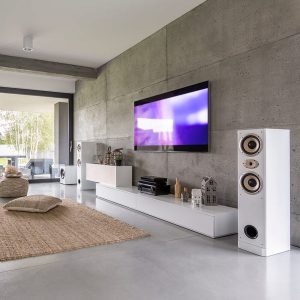Sound Deadening: How Does It Work?
There are many reasons why someone might want to deaden sound. Maybe they live in a busy city and want to reduce the amount of noise coming into their home. Or maybe they work in a loud office and need a way to concentrate. Whatever the reason, sound deadening is a great solution! In this blog post, we will discuss what sound deadening is and some of the materials that can be used for it. Stay tuned!

Sound Dampening, Damping, and Deadening
Sound dampening, sound damping, and sound deadening are all terms that are used to refer to the same thing. In this article we will be using the term “sound deadening” as it is most commonly used in our industry. The only difference between the three terms is their usage– each word has a specific context where it is preferred over others:
- Sound Dampening: It means to reduce noise or vibration by absorbing it with an acoustic material of some sort.
- Sound Deadening: This refers to the actual material that is used for sound dampening.
- Sound Damping: It refers to parts or components of a vehicle that were specifically designed with noise and vibration reduction in mind. Most commonly seen as an adjective, such as “noise-dampened” or “vibration-damped”.
Sound deadening materials help reduce unwanted road noises while driving by using dense foam barriers to absorb audio waves before they reach your ears. These materials work best at blocking low frequency sounds like engine rumble because their wavelengths are longer compared with higher frequency sounds. You can find several different types of sound deadeners on the market, but some of the most common ones are:
Sound Absorbing Materials
Reverberant sound pressure levels (RL) are a measure of the intensity of sound reflections in a given space. These reflections can be controlled by using sound absorbing materials to reduce the amount of reflected energy that is returned to the listener’s ears. This will help improve speech intelligibility and overall sound quality in spaces like classrooms, meeting rooms or any room where you want to minimize distractions and create an environment where people can focus on their tasks.
The effectiveness of a sound absorption material is measured by its noise reduction coefficient (NRC), which is a unitless number that represents how much of the incident acoustic energy is absorbed by the material. A higher NRC rating means that more sound is being absorbed, making it a better choice for soundproofing applications. Sound absorption materials are typically made from foam panels or acoustic cotton, with each material offering its own set of benefits and drawbacks depending on your specific needs.
- foam panels
These types of absorbers tend to be more cost effective than other options like fiberglass insulation or mineral wool because they’re lightweight and easy to transport.
- Acoustic cotton
This material may not be as effective at blocking sound waves but it’s still able to absorb some of the acoustic energy. You can use this type in situations where you want a softer look (such as with home theater rooms).
- Fiberglass Insulation
A fiberglass insulation is one way that people reduce their power bills by keeping warm air inside during winter months and cool air inside during summer months.”
- Mineral Wool
It can also be used for thermal insulation, but unlike fiberglass which has an open porous structure allowing it to trap heat between its fibers easily.”
A few other things to consider when choosing from these materials include cost effectiveness; ease of installation/oval if necessary; fire-resistance or not; and how well it will blend in with the surrounding environment. As you can see, there are many things to take into account when trying to deaden sound. So before making a purchase, be sure to do your research and find the best material for your specific needs!
Damping Materials
Damping materials means to reduce resonance in the room, by absorption or redirection (reflection or diffusion). Damping materials serve to isolate the cabinet from the floor or wall it’s mounted on. This helps keep vibrations from traveling through the structure and into the speakers, which can cause them to distort or even break.
There are many different types of damping materials available on the market, but some of the most common ones are:
– Rubber grommets: These work by absorbing vibrations before they have a chance to reach the speaker. They’re usually made out of neoprene rubber and can be placed either on top or underneath your speakers.
– Mass loaded vinyl (MLV): When used in conjunction with other damping materials, MLV helps reduce resonances from within a room or enclosure by adding weight where necessary. It also acts as an effective barrier against outside noise pollution such as traffic sounds if you live close to busy roads.
Whatever sound deadening material you choose, make sure it’s designed for your specific needs.
– If you’re looking to control vibrations in a room or car, then go with one that absorbs them before they can reach the speakers.
– If what you really want is an insulated barrier against outside noise pollution like traffic sounds if you live near busy roads.
– Then choose something heavy enough to block out those noises while also being lightweight enough so as not to cause any structural damage when installing it on walls and ceilings.
In Conclusion
Sound deadening is an important consideration for those who want to reduce the amount of noise that they are exposed to. By choosing a material that can support your needs, you will be able to find peace and quiet. If you’re interested in learning more about sound deadening or finding out which materials might work best for you, contact our team today!